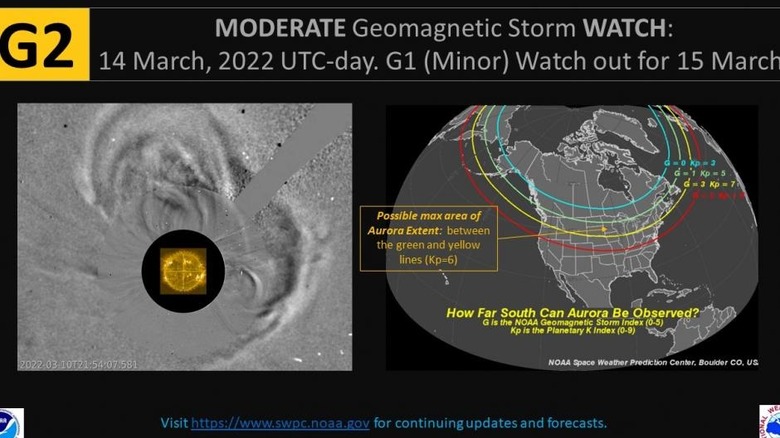Space Forecast Warns Earth Faces Big Solar Storms This Week
The sun is going through a period of increased activity, it seems, and that could mean geomagnetic storms here on Earth. NOAA has issued moderate and minor geomagnetic storm watches for this week, and while that sounds a little intimidating at first blush, those of us here on the third rock from the sun don't have much to worry about. However, despite the fact that even a moderate geomagnetic storm doesn't mean much for the vast majority of us, some people in the northern latitudes of the country might get to see the effects of it.
We're talking, of course, about the aurora borealis, colloquially known as the northern lights. While usually limited to the northern latitudes beyond the borders of the contiguous U.S., these stronger-than-normal geomagnetic storms come with a chance of making the northern lights visible further south. If you live in the northern states, you might want to turn an eye to the sky this week to see if the northern lights have shifted far enough south to be seen in your area.
NOAA's geomagnetic storm watches for this week
These geomagnetic storms are the result of energy from solar coronal mass ejections carried to Earth by the sun's solar wind, according to LiveScience. For March 14, NOAA issued a moderate geomagnetic storm watch, while March 15 has a minor geomagnetic storm watch. Geomagnetic storms, as outlined on the NOAA website, are rated on a five-point scale, starting at "minor" and ending at "extreme." While extreme geomagnetic storms are rare – NOAA's Space Weather Prediction Center says that we expect four per 11-year solar cycle – minor and moderate geomagnetic storms are much more common.
So common, in fact, that the Space Weather Prediction Center expects 600 moderate geomagnetic storms per cycle along with a whopping 1,700 minor storms. Minor geomagnetic storms carry suitably minor risks here on Earth; NOAA says they may cause "weak power grid fluctuations" and "minor impact on satellite operations." Moderate storms can have more intense effects, but still nothing to worry about for most people living at lower latitudes on Earth. At higher latitudes, however, NOAA says moderate, long-lived geomagnetic storms can cause transformer damage while ground control may need to take corrective action for any spacecraft impacted.
These minor and moderate storms also push the aurora further south. While a moderate storm can result in an aurora that reaches as far south as New York and Idaho, minor storms typically only push the aurora as far south as northern Michigan and Maine. Still, if you're in the northern reaches of the contiguous United States and you have clear skies tonight, it's worth stepping outside and seeing if you can spot the northern lights.

